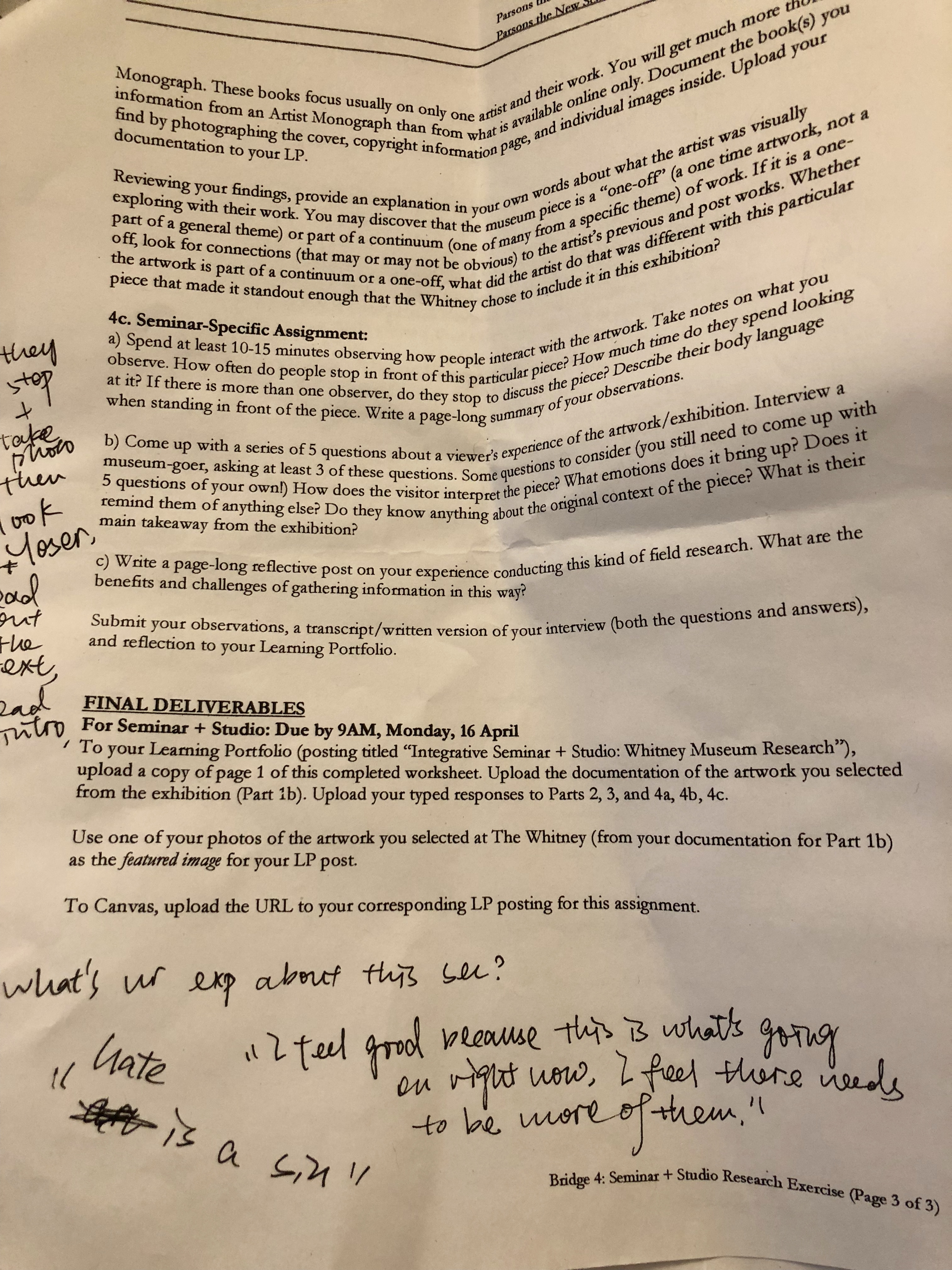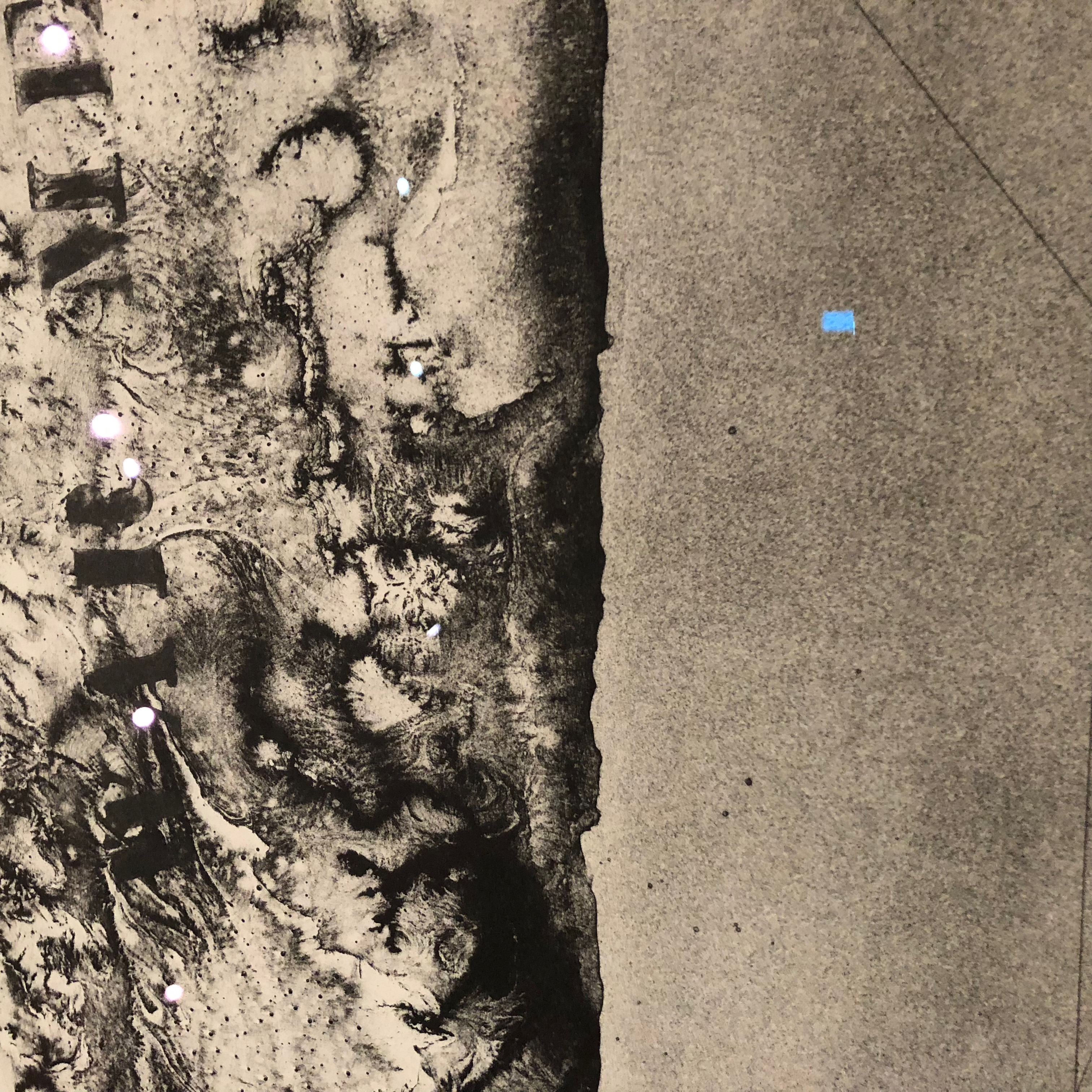Whitney Museum Research
2a+2b
The artwork I chose is a series of drawings hanging on the wall of “Stop the war” section. It seems that the artist is depicting scenes on battlefields because the black powders on the canvas remind me of gunpowder and smoke. So the material successfully reinforces and support the content. The details that catch my attention at first are the textures of the drawing, Using charcoals and ink, the artist draws smoke in a very random yet realistic way, which is really impressive to look at. Also, the use of silhouette is very eye-catching even looking from the far side. When I look closer, I find there are black text “war memorial” on each drawing, seems to be hidden under gunfire.
3a+3b
The text “war memorial” is hidden under the smoke on battlefield, and it works really well with the graphics by making the concept more obvious, if the audiences are not sure when they first see those works, they will be aware of the content and context after seeing the text. The works are part of the “Stop the war” section, which includes anti-war posters, installations, and drawings.
The material that the artist mainly uses are watercolor and printmaking materials, which are pretty common in both contemporary art and classic art works.
In oder to have a better interpretation of these works, I think I need to know more about the artist’s background, previous works, and the societal background that she’s in when creating theses pieces.
4a
Why does the artist choose to depict battlefield scenes?
What is the reason of making a series of black and white drawings?
Why did the artists put text in the drawing?
Where is the place that the artist try to depict?
If the content are about real battlefields, which period did the wars happen?
4b.
About the artist
Kara Elizabeth Walker (born November 26, 1969) is an American contemporary painter, silhouettist, print-maker, installation artist, and film-maker who explores race, gender, sexuality, violence, and identity in her work. Before creating these works, Walker mainly worked with drawing, installation and screen-prints and cut-paper silhouettes, usually black figures against a white wall, addressing the history of American slavery and racism through violent and unsettling imagery. I think the Whitney chose these works of hers because they are closely related to the concept of section “Stop the war” and the more general exhibition concept “An incomplete history of protest ”.




